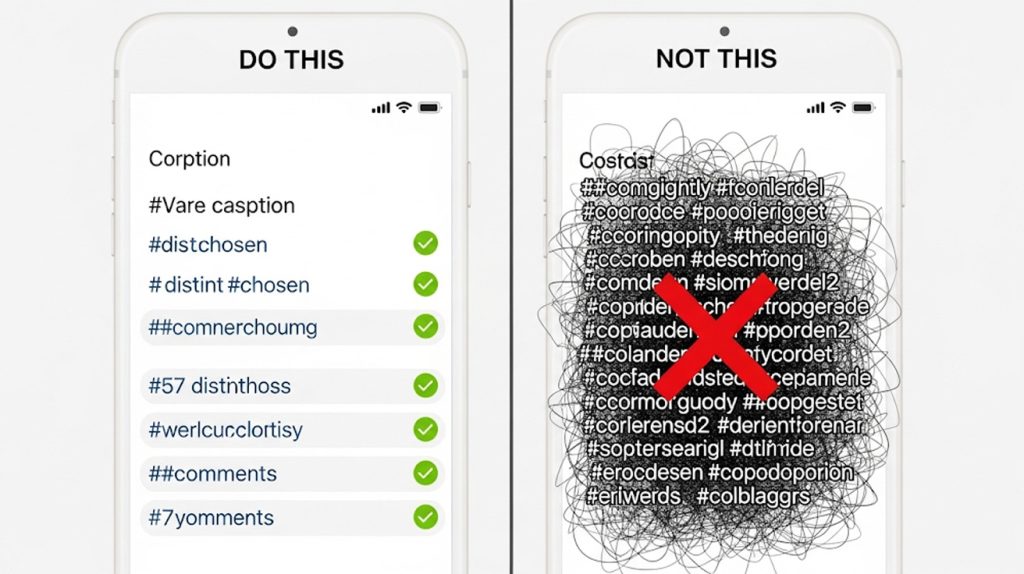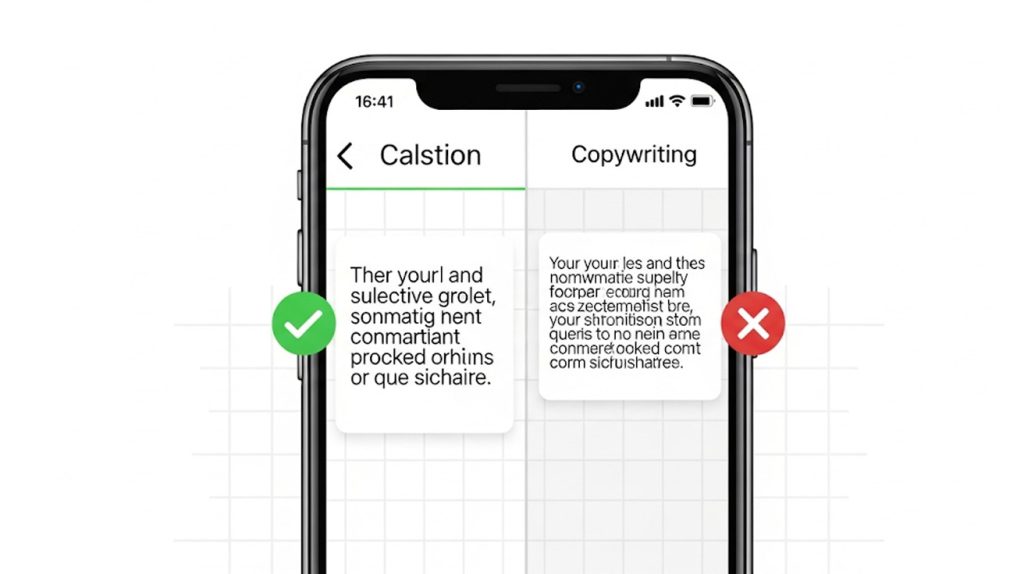You’ve spent hours creating the perfect Reel, a beautiful carousel, or a stunning single post. The visuals are on point. Now, you’re faced with a blank screen, and a question that feels harder than it should: What do I write in the caption? You know a great caption is what gets people to stop scrolling and engage with your content, but writing one that is not boring or salesy feels impossible.
But what if you had a roadmap?
The truth is, a powerful caption strategy isn’t about being a master wordsmith; it’s about following a few key rules that tell the algorithm and your audience what you’re all about. A great caption is your secret weapon for building a community and a brand that people know, like, and trust.
This guide is your new rulebook. We’re going to break down the definitive Do’s and Don’ts for writing Instagram captions from the perspective of a copywriter, so you can cut through the noise, avoid common mistakes, and turn your captions into a powerful tool for your brand.
Ready to get focused and start writing with purpose? Let’s dive in.
The Golden Rules of Engagement
While a great photo or video is what gets a person to stop scrolling, your caption is what gets them to stay. These simple rules will help you write captions that are so engaging, your audience can’t help but stop and read.
- DO Engage with an Interesting First Line: The first line of your caption is your hook. It needs to be interesting enough to get a person to stop scrolling and click “more”. You can use a question, a unique thought, or a bold statement to grab their attention.
- DO Write Long-Form Captions: The Instagram algorithm loves captions that get a person to expand and read more. You should write long-form captions that your audience needs to expand to read. This is a key signal to the algorithm that your content is valuable and worth pushing to a wider audience.

- DON’T Write Boring Captions: Your captions should have “pop or character.” The pin advises against writing “boring, been-there-done-that” captions. Your captions should be an extension of your brand’s personality, so be sure to write in a tone that resonates with your audience.
- DON’T Write Short, One- or Two-Line Captions: The pin advises against writing captions that don’t need to be expanded. When you write a short caption, you’re missing a huge opportunity to provide value, build a community, and signal to the algorithm that your content is valuable.
The Art of Brand Storytelling
While your first line is what gets a person to stop scrolling, your brand storytelling is what gets them to follow you. These simple rules will help you write captions that are so engaging, your audience can’t help but feel like they know you.
- DO Tell Stories and Build Your Brand: People don’t want to be sold to; they want to be connected with. A lasting brand sells more than a sales pitch ever will. You should use your captions to tell stories that build your brand and your authority. This is a powerful way to build trust and a loyal following.
- DO Be Yourself and Have Fun: The pin recommends being yourself and having fun in your captions. Your audience wants to see the real you, so you should let your personality shine through. A great way to do this is to use humor, witty analogies, and a conversational tone.

- DON’T Feel Like You Have to Put on a New Personality: The pin advises against feeling like you have to put on a new personality to build your brand. Your audience wants to know the real you, so don’t try to be something you’re not.
- DON’T Write Endless Sales Captions: Your captions should be about building a connection with your audience, not about selling them something. The pin advises against writing endless sales captions with no brand-building integrated. This is a key mistake that will hurt your engagement and turn your audience off.
Hashtag Strategy & What to Avoid
You’ve written a great caption that’s full of personality, but you’re not done yet. Hashtags are a powerful tool for getting your content in front of a new audience, but only if you use them correctly.
- DO Put Hashtags in the Comments: The pin recommends putting your hashtags in the comments so they don’t crowd your caption. This is a great way to keep your caption clean and easy to read while still getting the benefit of using hashtags for discovery.

- DON’T Crowd Your Captions with the Maximum Number of Hashtags: You’ve heard that you should use the maximum number of hashtags, but the pin advises against it. When you use too many hashtags, you risk looking like a spammer and turning your audience off. Instead, focus on using a few high-quality hashtags that are relevant to your content and your audience.
Your New Captions Strategy
You’ve made it to the end, and you’ve gotten past the biggest barrier to a powerful caption strategy: the assumption that a good caption is a matter of guesswork. You now have a clear, simple, and repeatable strategy that will turn your captions into a powerful tool for your brand.
This isn’t about magical hacks; it’s about a complete mindset shift that recognizes your captions as a key part of your content strategy. You now have a playbook of do’s and don’ts that you can pull from at any time. You’ve learned the power of an engaging first line that gets a person to click “more”.
You’ve also learned the importance of using your captions to build a brand by telling stories and having fun. And finally, you’ve learned a simple hashtag strategy that will get your content in front of a new audience without looking like a spammer.
This is the key to building a thriving, engaged community. It’s the difference between a random post and a powerful, lasting connection. When you follow these simple rules, your Instagram captions will no longer be a source of frustration; they will become a key part of your brand’s growth strategy.
The playbook is in your hands. Now it’s time to put it to work. What’s the one “Don’t” you’re going to stop doing today?

